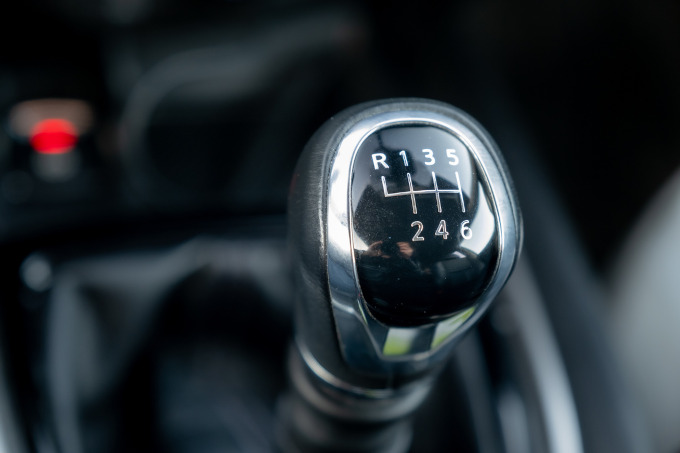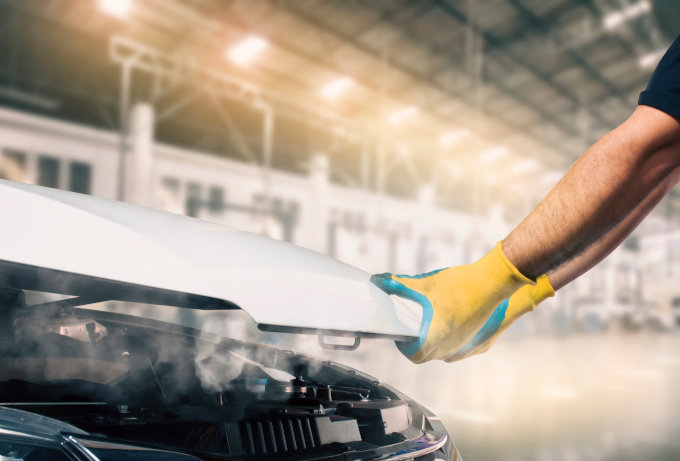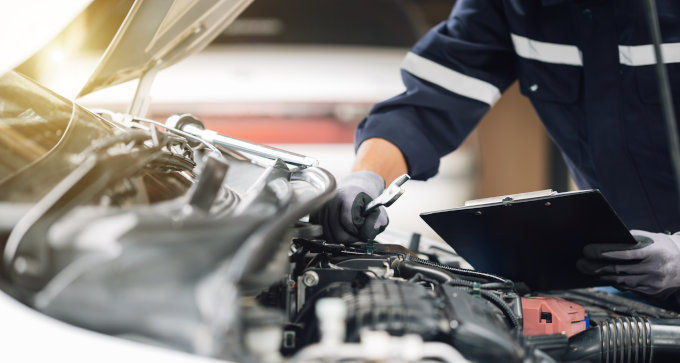What Is a Transmission?
A car transmission works by allowing the transfer of power from the engine to the vehicle’s wheels. It does this by harnessing the engine's torque and managing its speed when driving. Transmissions contain fluid to allow free movement of its gears within the transmission housing.
Transmissions can either be manual or automatic, which refers to the type of user input (human or machine) in changing the gears once the vehicle is moving.
Manual: Dependent on the driver to switch gears by manually controlling a hand-operated gear lever and a clutch-operated foot pedal.
Automatic: Uses a computer and a series of planetary gears, clutches, and actuators to automatically shift gears with no driver input.
Semi-Automatic: Driver input is needed to shift gears but works like an automatic with no clutch pedal. Instead, a driver can shift using paddles behind the steering wheel.
CVT (Constantly Variable Transmission): is a cone-shaped setup using pulleys and a push belt instead of a fixed gear system.
How Manual Transmissions Work
With a manual transmission, the driver controls gear selections, clutch engagement and release, and shifting. A transmission has a number of gears at different gear ratios to balance the power from an engine. Lower ratios mean higher torque with lower speeds. Higher ratios offer lower torque but allow a higher vehicle speed. Usually, manual transmission-equipped vehicles have a 4 to 6-speed setup and one reverse gear.
Typically a manual transmission consists of three shafts and different-sized gears that are interconnected. The input shaft is linked to the engine using a clutch disc, pressure plate, and flywheel. Its countershaft has meshed gears connected to the input shaft and output shaft where the gears are located. Finally, the output shaft connects the driveshaft to the countershaft and is used to drive the wheels.
Locking collars are used to slide along a set of gears and lock them into place. Neutral means no gear is selected. The output shaft does not move because no gears are locked into place with locking collars.
How to Operate a Manual
First, the clutch pedal must be pressed, separating the flywheel from the clutch disc that is engaged to the input shaft. The driver needs to place the gear lever into first gear. The linkage from the shifter engages first gear using the locking collar, locking the output shaft. Upon lifting the clutch pedal, the clutch disc engages with the flywheel and the transmission input shaft is geared to the output shaft, which begins to rotate at engine speed and the vehicle will begin moving forward.
Advantages
- Drivers have complete control of shifting, offering a fun driving experience.
- Decreased purchase and repair costs due to less complexity of the system
- Last longer and typically requires fewer repairs throughout its life
Disadvantages
- Parts may be harder to come by since this type of transmission is becoming less common
- The clutch will need periodic replacement which can be costly
- Harder to use and learn to drive than automatic or semi-automatic transmissions
Warning Signs to Check Your Manual Transmission
Unresponsive
If your car becomes more difficult to move from a standstill, the clutch may have failed. The clutch has a friction lining that engages the transmission to the engine when in gear. This surface-to-surface slipping contact over time means this material can wear away.
Rough or Delayed Shifting
If shifting becomes hard to do or slips and engages a second or two later than expected, your transmission or clutch may no longer be able to engage and shift smoothly, indicating trouble ahead.
Slipping Clutch
Any chattering, a burning smell, or a high revving engine when you release the clutch pedal are signs of a slipping clutch.
Clutch Pedal Feels “Weird”
Weird is not always wonderful, especially in the case of how a clutch pedal feels. Transmission issues can cause the clutch to feel different than usual: sticky, mushy, stiff, loose, lower or higher, the list goes on. If your clutch is not behaving normally or the pedal just doesn’t feel “right,” have it looked at immediately.
Odd Sounds
Listen for any odd sounds. Your transmission should be quiet or sound smooth. If there is an uncommon loud crunching or whining sound, then bearings or gearing may be at fault. It is important to take it to a repair specialist as soon as possible.
Fluid Leakage
If dark wet patches are present on the ground or if you can see dripping, you may have a transmission fluid leak. This is caused by worn seals or a loose component. Low transmission fluid creates an increased risk of overheating, accelerating wear and damage to the system.
How to Take Care of a Manual Transmission
Manual transmissions are prone to wear and need regular maintenance to keep them running smoothly. Here are three tips for taking care of your manual transmission:
Replace Fluid
The meshed gears in a manual transmission are bathed in transmission fluid. It is essential to regularly maintain your transmission fluid and replace it according to manufacturer guidelines, typically 30,000 - 60,000 miles. Be careful in hot weather. Knoxville summers can cause transmission fluid to heat up, especially in traffic. Overheating transmission fluid can cause damage to the transmission quickly. Be proactive by checking your transmission fluid more often to ensure a well-functioning transmission.
Maintain Clutch Assembly
A clutch typically needs replacing around 60,000 miles, depending on the vehicle. The clutch assembly has six main elements: the release bearing, pressure plate, friction plate, and a clutch fork, along with a hydraulic master cylinder and slave cylinder to engage and disengage the clutch when pressing on the clutch pedal. All or some of these elements may require replacement when servicing a clutch system.
Avoid Flooded Areas
Knoxville is an area prone to flooding. Driving your low-slung sedan through a flood can cause catastrophic damage to the engine and transmission if water gets into the vents and open areas. Water does not mix well with the oil needed to lubricate your transmission’s components. Water inside the transmission can result
in a high repair bill, or even the need to replace the transmission entirely. If you do get caught in higher-than-normal water, have the fluid changed immediately. You may be able to save money and headaches.
Manual Transmission Trouble?
Transmissions are the go-between from the engine to the wheels and are a complicated but important part of your vehicle’s drivetrain. It is essential to maintain and repair any issues with your transmission. Visit your local AAMCO Knoxville Center or schedule an appointment today!











